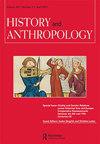Medicinal rule and the interdependent duality of power between ntemi (chief) and ngole (queen): A historical ethnographic work on Sukuma chiefdom Busiya
IF 0.4
2区 历史学
Q3 ANTHROPOLOGY
引用次数: 0
Abstract
By employing a historical ethnographic method in approaching Sukuma chiefdoms as spaces of medicinal rule, this article argues that the basis of the functioning and the prevalent well-being of these very chiefdoms lied in the duality and interconnectedness of ntemi (male) and ngole (female) as interdependent figures. Contrary to this observation that will be made, within works on Sukuma – and additionally more broadly across ethnic groups in sub-Saharan Africa – there has been a male-biased assumption that the singular figurehead who was foundational to exercising medicinal rule within the chiefdoms studied, is the male chief. This assumption was based on decades of colonialism and (mis)understanding of chieftaincy power systems. The article counters this male-biased assumption by placing the gendered nature of medicinal rule in the chiefdom centre-stage and by radically questioning the lack of writing present on female figureheads. A case study of the Busiya chiefdom in Shinyanga region of Northern Tanzania will illustrate the intrinsic connection between the ntemi (chief) and the ngole (queen) in facilitating the continuing functioning of the chiefdom throughout ever-changing circumstances.医药规则和ntemi(酋长)和ngole(女王)之间相互依赖的权力二元性:苏库马酋长布西亚的历史民族志著作
本文采用历史民族志方法,将苏库马酋邦作为医疗规则的空间来研究,认为这些酋邦的功能和普遍福祉的基础在于作为相互依赖的人物的ntemi(男性)和ngole(女性)的二元性和相互关联性。与这一观察结果相反,在关于Sukuma的研究中——以及在撒哈拉以南非洲更广泛的种族群体中——一直存在一种男性偏见的假设,即在所研究的酋长领地中,唯一的象征性领袖是行使医疗规则的基础,是男性酋长。这种假设是基于几十年的殖民主义和对酋长权力体系的(错误)理解。这篇文章反驳了这种男性偏见的假设,将医疗规则的性别本质置于酋长统治的中心舞台,并从根本上质疑女性雕像上缺乏文字的存在。对坦桑尼亚北部Shinyanga地区Busiya酋长领地的个案研究将说明ntemi(酋长)和ngole(女王)在促进酋长领地在不断变化的环境中继续运作方面的内在联系。
本文章由计算机程序翻译,如有差异,请以英文原文为准。
求助全文
约1分钟内获得全文
求助全文
来源期刊

History and Anthropology
Multiple-
CiteScore
1.80
自引率
0.00%
发文量
41
期刊介绍:
History and Anthropology continues to address the intersection of history and social sciences, focusing on the interchange between anthropologically-informed history, historically-informed anthropology and the history of ethnographic and anthropological representation. It is now widely perceived that the formerly dominant ahistorical perspectives within anthropology severely restricted interpretation and analysis. Much recent work has therefore been concerned with social change and colonial history and the traditional problems such as symbolism, have been rethought in historical terms. History and Anthropology publishes articles which develop these concerns, and is particularly interested in linking new substantive analyses with critical perspectives on anthropological discourse.
 求助内容:
求助内容: 应助结果提醒方式:
应助结果提醒方式:


